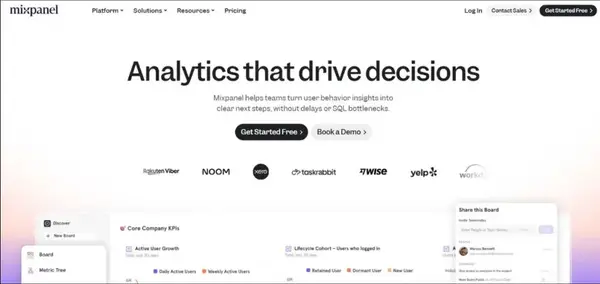The £1.9 Billion Wake-Up Call: Inside the JLR Hack, UK's Costliest Cyber Attack in History

Bottom Line Up Front: The September 2025 cyber attack on Jaguar Land Rover has officially become the UK's most financially devastating cyber event in history, with the Cyber Monitoring Centre estimating total damages between £1.6-2.1 billion (most likely £1.9 billion). The five-week production shutdown cascaded through 5,000+ businesses across JLR's supply chain, exposing critical vulnerabilities in just-in-time manufacturing and forcing a government-backed £1.5 billion loan guarantee. While NotPetya remains the global record holder at $10 billion in damages, the JLR incident marks a watershed moment for UK critical infrastructure—proving that even with substantial resources and sophisticated defenses, a single compromised password can paralyze an entire industrial ecosystem.

The Attack: When Digital Disruption Meets Manufacturing Reality
On the final Sunday of August 2025—August 31st—the first whispers of trouble emerged from Jaguar Land Rover. By Monday morning, September 1st, the automotive giant had ground to a complete halt. Global production of more than 1,000 vehicles daily ceased at all manufacturing and assembly plants spanning the UK, Brazil, Slovakia, and India.
The timing could not have been worse. The attack coincided with the UK's "New Plate Day" on September 1st, when the automotive industry typically sees a surge in vehicle registrations and deliveries. Dealerships sat paralyzed, unable to register or deliver vehicles to waiting customers, while newly assembled cars remained frozen in place, creating massive delivery backlogs.
The attackers, operating under the banner "Scattered Lapsus$ Hunters"—suggesting a collaborative effort between Scattered Spider, Lapsus$, and ShinyHunters—gained initial access through compromised credentials. Security researchers traced the attack methodology back to earlier breaches, noting that threat actors had previously exploited stolen Jira credentials dating back to 2021.
The Mechanics of Maximum Damage
JLR proactively shut down its IT systems on September 2nd after detecting the attack, initially stating there was no evidence of data theft. However, by September 10th, the company revised its assessment, confirming that hackers had stolen "some data" during the intrusion. The company notified the UK Information Commissioner's Office about the potential data breach—organizations can reference breach notification requirements across all 50 US states and understand PII regulations by state to ensure compliance with their obligations.
The decision to power down systems pointed to attackers reaching sensitive infrastructure, raising the possibility of IT-OT (operational technology) crossover—a nightmare scenario that could have endangered not just data, but physical manufacturing processes.
What began as an expected short-term disruption evolved into a prolonged crisis:
- September 16: Production pause extended to September 24
- September 23: Further delay announced until October 1
- September 30: Controlled restart finally announced, but with government backing of a £1.5 billion loan guarantee
- Estimated full recovery: January 2026
The Staggering Financial Toll: Anatomy of £1.9 Billion in Damages
The Cyber Monitoring Centre's (CMC) forensic analysis reveals how a cyber attack transforms into an economic catastrophe. Organizations can estimate their own potential breach costs using our Data Breach Cost Calculator to understand their risk exposure.
Direct Impact on JLR (Over 50% of total cost)
Each week of shutdown cost JLR an estimated £108 million in fixed costs and lost profit, with UK production down by nearly 5,000 vehicles weekly. The company's three UK plants at Solihull, Halewood, and Wolverhampton—which typically produce 1,000 vehicles daily—sat idle for approximately five weeks.
The financial hemorrhaging included:
- Lost production revenue: Millions per day in unrealized vehicle sales
- Fixed costs continuing: Facilities, leases, and overhead despite zero output
- Incident response: Costs for cybersecurity specialists, forensic investigation teams (calculate potential IR costs with our Incident Response Cost Calculator)
- IT infrastructure rebuild: Complete systems restoration and hardening
- Regulatory compliance: Notifications, legal fees, potential fines
Supply Chain Devastation (Approximately 40-45% of total cost)
A single luxury car like a Range Rover comprises 30,000 discrete components furnished by a supply network of hundreds of companies representing 104,000 jobs in the UK alone. Many of these suppliers are small or medium-sized enterprises highly dependent on JLR.
The CMC identified over 5,000 UK organizations affected by the attack across multiple tiers: nearly 1,000 tier-one suppliers, and thousands of tier-two and tier-three suppliers. Reports indicated that as many as 25% had already begun layoffs, with another 20-25% potentially facing the same fate.
The ripple effects extended to:
- Dealerships: Lost sales and commission revenue
- Logistics providers: Idle trucking and shipping capacity
- Local economies: Restaurants, hotels, and services near manufacturing sites
- Aftermarket specialists: Unable to access digital parts ordering platforms
The Human Cost Beyond the Numbers
While the attack didn't endanger human life like cyber attacks on NHS bodies might, it severely affected job security for thousands, with knock-on consequences for mental and physical wellbeing, household resilience, and compound effects on existing economic, regional, or social inequalities.
Comparing JLR to History's Costliest Cyber Attacks
To understand the JLR incident's significance, we must examine it alongside the most devastating cyber attacks in history:
1. NotPetya (2017): The $10 Billion Global Catastrophe
NotPetya remains the most expensive cyber attack to date, with the White House assessment placing total damages at $10 billion in 2017 (approximately $11.9 billion in 2023 dollars). Unlike typical ransomware, NotPetya's primary goal was destruction rather than extortion—it was essentially state-sponsored cyber warfare.
The Impact:
- Shipping giant Maersk reported losses between $200-300 million in a single quarter, handling one-fifth of the world's shipping at the time
- FedEx's TNT subsidiary suffered approximately $300 million in lost quarterly revenue
- Pharmaceutical company Merck faced $135 million in lost sales plus $175 million in direct attack-related costs
- Consumer goods manufacturers Reckitt Benckiser and Mondelez International reported losses of $129 million and $150 million respectively
Key Lessons: NotPetya used EternalBlue and EternalRomance exploits along with the Mimikatz tool, spreading through legitimate network operations. The attack highlighted that even after the highly publicized WannaCry attack demonstrated EternalBlue's potency, millions of systems continued to lack proper updates.
Read our analysis: The 15 Most Devastating Data Breaches in History
2. Change Healthcare/UnitedHealth (2024): The $2.4+ Billion Healthcare Catastrophe
The February 2024 ransomware attack on Change Healthcare, a UnitedHealth Group subsidiary, ultimately cost the company $2.457 billion by Q3 2024—nearly $1 billion more than initial estimates. The attack affected one-third of all patient records in the United States and disrupted healthcare operations nationwide for months.
The Impact:
- Processing platform handles more than 15 billion transactions yearly—roughly one-third of U.S. patient records
- Impacted 190 million individuals (updated from initial estimate of 100 million), raising questions about user privacy rights and potential regulatory fines
- UnitedHealth paid approximately $9 billion in loans to healthcare providers struggling with cash flow
- CEO confirmed paying $22 million ransom to ALPHV/BlackCat ransomware group
The Vulnerability: The entire catastrophe stemmed from a single compromised password for a VPN account that lacked multi-factor authentication—a basic security control that could have prevented billions in damages.
Related coverage: Global Cybersecurity Incident Review: January – April 2025
3. Colonial Pipeline (2021): The $2.1+ Billion Infrastructure Wake-Up Call
In May 2021, the DarkSide ransomware group attacked Colonial Pipeline, forcing a shutdown of the pipeline that carries 45% of all fuel consumed on the East Coast. The attack caused fuel shortages, panic buying, and led to President Biden declaring a state of emergency. Total economic impact exceeded $2.1 billion when accounting for all direct and indirect costs.
The Impact:
- CEO paid $4.4 million ransom within hours, later describing it as "the hardest decision I've ever made"
- Department of Justice recovered 63.7 bitcoin (approximately $2.3 million) from attackers
- Direct operational losses amounted to $8.46 million daily, while supply chain disruptions generated cascading costs of $27.2 million per day
- Gas prices rose to highest levels since 2014, affecting millions of consumers
The Vulnerability: Attackers gained access using a compromised password for an inactive VPN account that did not have multi-factor authentication enabled—the password was "complex" but had been compromised in a separate data breach.
4. WannaCry (2017): The $4-8 Billion Global Ransomware Epidemic
The WannaCry attack affected nearly 230,000 computers across over 150 countries in just four days. Using exploits from the Equation Group that were leaked by the Shadow Brokers, the attackers created ransomware capable of spreading quickly over the Internet and local networks.
The Impact:
- Critical infrastructure including hospitals had encrypted medical equipment, and factories were forced to stop production
- Estimated total damages between $4-8 billion globally
- NHS hospitals across the UK particularly hard hit, with some forced to cancel operations and turn away patients
5. Epsilon Data Breach (2011): The $4 Billion Marketing Catastrophe
The Epsilon breach affected email marketing giant Epsilon and its 75 clients, including Best Buy, JPMorgan Chase, and Target. When forensic audits, monitoring, litigation, and lost business were included, total costs reached approximately $4 billion.
- Epsilon itself paid an estimated $225 million
- 75 affected clients collectively paid around $410 million
- Each client faced close to $5 million in customer notification, settlement, and compliance costs
What Makes JLR's Attack Different: The Supply Chain Multiplier Effect
While JLR's £1.9 billion cost doesn't surpass NotPetya or Change Healthcare globally, it represents something more insidious for the UK specifically—the weaponization of supply chain dependencies.
"We tend to think of systemic cyber risk as something that spreads through shared IT infrastructure: the cloud, a common software platform, or self-propagating malware," said CMC chief executive Will Mayes. "What this incident demonstrates is how a cyber attack on a single major manufacturer can cascade through thousands of businesses, disrupting suppliers, transport and local economies, and triggering billions in losses across the UK economy."
The Category 3 Systemic Event Classification
The CMC declared JLR a Category 3 Systemic Event on its "hurricane" scale. Ciaran Martin, chair of the CMC's technical committee and former NCSC lead, stated: "With a cost of nearly £2bn, this incident looks to have been by some distance, the single most financially damaging cyber event ever to hit the UK."
This classification matters because:
- It's not just about JLR: Over 5,000 organizations directly affected
- Long recovery timeline: Full recovery not expected until January 2026
- Government intervention required: £1.5 billion loan guarantee necessary
- Potential for higher costs: Estimate sensitive to OT impact and production recovery speed
The Attacker: Scattered Lapsus$ Hunters and the Evolution of English-Speaking Cybercrime
The attack was attributed to a hybrid cybercrime collective calling itself "Scattered Lapsus$ Hunters," suggesting collaboration between Scattered Spider, ShinyHunters, and Lapsus$—some of the most notorious English-speaking cybercriminal groups.
This alliance represents a concerning evolution:
- Scattered Spider: Known for sophisticated social engineering attacks, responsible for the 2023 MGM Resorts hack
- ShinyHunters: Prolific data theft specialists with history of high-profile breaches
- Lapsus$: Teenage-led group behind attacks on Microsoft, Nvidia, and others
A History of JLR Targeting
The September attack wasn't JLR's first rodeo with these threat actors. In March 2025, the HELLCAT ransomware group leaked 700 internal JLR documents after compromising the company's Jira server. Then in March 2025, another threat actor "APTS" appeared, claiming to have exploited infostealer credentials dating back to 2021 and leaking an additional 350 GB of sensitive data.
This pattern suggests:
- Persistent reconnaissance: Attackers studied JLR's systems over time
- Credential harvesting: Multiple compromised access points accumulated
- Coordinated timing: September attack leveraged prior reconnaissance for maximum impact
Critical Vulnerabilities Exposed
The JLR attack, like Colonial Pipeline and Change Healthcare before it, exposes recurring patterns in enterprise security failures:
1. The MFA Gap
Despite being cybersecurity 101, multi-factor authentication remains inconsistently deployed, even in critical infrastructure:
- Colonial Pipeline: Inactive VPN without MFA
- Change Healthcare: Active system without MFA
- JLR: Compromised credentials (likely without sufficient protections)
2. The Just-in-Time Manufacturing Trap
Modern manufacturing relies on tightly synchronized supply chains where components arrive precisely when needed. This efficiency becomes a vulnerability when a single node fails, as there's no buffer or redundancy.
3. The IT-OT Convergence Risk
JLR's decision to shut down physical manufacturing operations suggests concern that attackers had reached or could reach operational technology controlling production lines—not just administrative IT systems.
4. The Vendor Access Problem
Attackers exploited third-party access—specifically Jira credentials that provided pathways into JLR's network. This highlights how vendor management and third-party risk assessment often lag behind direct security controls.
The UK Government Response: Unprecedented Intervention
The UK government underwriting a £1.5 billion loan guarantee represents unprecedented intervention in a private sector cyber incident. While the CMC analysis assumes none of this support will be taken up and no cost to taxpayers will materialize, the government's involvement signals the incident's national significance.
The concerning precedent: The CMC warned: "The government's intervention in this incident could create expectations for future events." This raises thorny questions about moral hazard—will companies invest sufficiently in cybersecurity if they expect government bailouts?
Lessons for Critical Infrastructure and Supply Chain Security
For Manufacturers:
1. Network Segmentation is Non-Negotiable Strict segmentation of networks limits lateral movement and protects operational technology from IT compromises.
2. Vendor Risk Management Must Match Internal Controls Third-party access points require the same security rigor as direct systems—no exceptions for "trusted" partners.
3. Incident Response Planning Must Include Supply Chain Should large enterprises consider helping ensure the financial survival of critically dependent supply chains during business interruptions resulting from cyber attacks as part of the cost of doing business?
For Supply Chain Partners:
1. Diversification of Critical Vendors Economic lock-in amplifies risk—the prohibitively high "switching costs" trap organizations in dependencies on vulnerable systems, enabling attackers to demand higher ransoms.
2. Shared Threat Intelligence Supply chain ecosystems must share threat intelligence rapidly—what compromises one supplier threatens all.
3. Financial Resilience Planning SMEs in supply chains need financial buffers and contingency plans for when major customers face prolonged outages.
For All Organizations:
The Basics Still Matter Most:
- Multi-factor authentication everywhere: No exceptions, no excuses
- Credential rotation and monitoring: Old credentials from past breaches remain attack vectors
- Regular security audits: Assume breach and verify continuously
- Offline, immutable backups: The only reliable ransomware defense
- Incident response plans: Tested regularly, not filed away
- Cost-benefit analysis: Use tools like our Data Breach Cost Calculator and Incident Response Cost Calculator to justify security investments to leadership
The Broader Context: 2025's Ransomware Surge
The JLR attack occurred against a backdrop of unprecedented ransomware activity:
Q1 2025 set records for ransomware, with multiple threat intelligence firms reporting historic highs. The GuidePoint Research and Intelligence Team identified 2,063 new ransomware victims posted on leak sites during Q1 2025—a 102% increase compared to Q1 2024.
Contributing factors:
- Analysts proposed that dwindling ransom payment rates may be incentivizing ransomware groups to significantly increase attack volume to maintain revenue streams
- Evolution of "double extortion" tactics prioritizing data theft alongside encryption
- Supply chain attacks providing force multipliers for impact
- AI-powered social engineering improving initial access success rates
Deep dive: Summer of Siege: A Deep Dive into the Breaches, Attacks, and Ransomware of 2025
Looking Forward: What January 2026 Recovery Really Means
The CMC's estimate that full recovery won't be reached until January 2026—five months after the attack—reveals the long tail of cyber incidents. This isn't just about turning systems back on.
The recovery roadmap includes:
- Technical restoration: Rebuilding compromised infrastructure with hardened security
- Supply chain resynchronization: Reconnecting thousands of suppliers to restored systems
- Customer confidence rebuilding: Addressing data breach notifications (reference US state notification requirements) and concerns
- Financial recovery: Recouping losses and normalizing cash flow across ecosystem
- Regulatory compliance: Completing investigations, implementing mandated changes, and addressing potential privacy fines while ensuring proper handling of personal data across jurisdictions
The Million-Dollar Question: Could This Have Been Prevented?
The uncomfortable truth is yes—through boring, unglamorous security hygiene:
The three failures that enabled £1.9 billion in damages:
- Compromised credentials not detected/rotated: Old Jira credentials from 2021 breach
- Insufficient access controls: Credentials provided excessive network access
- Inadequate segmentation: Single access point enabled widespread compromise
"The JLR incident shows while prevention is critical, resilience determines the scale of impact," said Chris Gibson, executive director of FIRST. "Manufacturers should focus on building systems that can withstand and recover from inevitable breaches."
The Takeaway for Executives and Boards
The JLR incident crystallizes a harsh reality for C-suites and boards:
Cyber risk is not an IT problem—it's an existential business risk that can:
- Halt all revenue generation for weeks
- Cascade through your entire ecosystem
- Destroy supplier relationships
- Require government intervention
- Take 5+ months for full recovery
Ciaran Martin's message to boards: "That should make us all pause and think, and then—as the National Cyber Security Centre said so forcefully last week—it's time to act. Every organisation needs to identify the networks that matter to them, and how to protect them better, and then plan for how they'd cope if the network gets disrupted."
The hard questions executives must answer:
- Could our organization survive a 5-week revenue halt?
- Are we protected better than JLR, Colonial Pipeline, or Change Healthcare?
- Can our supply chain survive if we're compromised?
- Do we have offline backups and tested recovery procedures?
- Is MFA truly deployed everywhere without exception?
Essential Breach Preparedness Resources
Understanding your organization's potential exposure is the first step toward meaningful protection. Use these tools to assess your risk:
Cost Estimation & Planning:
- Data Breach Cost Calculator - Estimate the total financial impact of a potential breach
- Incident Response Cost Calculator - Calculate IR team and recovery expenses
- Privacy Fines Calculator - Assess potential regulatory penalties
Compliance & Notification Requirements:
- US State Breach Notification Tracker - Comprehensive guide to all 50 states' breach notification laws
- User Privacy Rights Database - Understand privacy rights across jurisdictions
- State PII Regulations - Reference for personal information handling requirements
- Biometric Data Regulations by State - State-specific biometric privacy laws
Conclusion: The £1.9 Billion Warning
The JLR hack doesn't just represent £1.9 billion in economic damages—it represents the cost of complacency, the price of complexity, and the vulnerability of interconnected supply chains.
While NotPetya's $10 billion global toll remains the historic benchmark, JLR's distinction as the UK's costliest cyber event matters for a different reason: it proves that state-sponsored nation-state attacks aren't the only path to catastrophic damage. Cybercriminal gangs, often teenagers and young adults operating from bedrooms, can now generate billion-pound impacts through supply chain targeting.
The era of "cyber is an IT issue" is definitively over.
The question isn't whether your organization will face a sophisticated attack—it's whether you'll have the basics in place when it comes. Because as JLR, Colonial Pipeline, and Change Healthcare painfully demonstrated, the difference between minor incident and existential crisis often comes down to having MFA enabled on a single account.
The £1.9 billion question for every organization: Are you protected better than JLR was?
Related Coverage:
- Jaguar Land Rover Cyberattack: When Digital Disruption Brings Global Production to a Halt
- The 10 Most Recent and Significant Cyber Attacks and Data Breaches Worldwide (Q1 2025)
- Global Cybersecurity Incident Review: January – April 2025
- The 15 Most Devastating Data Breaches in History
- Summer of Siege: A Deep Dive into the Breaches, Attacks, and Ransomware of 2025
Analysis based on research from BBC, Cyber Monitoring Centre, CYFIRMA, Dark Reading, Computer Weekly, and other authoritative sources. Cost estimates represent best available analysis as of October 2025 and may be revised as more information becomes available.






